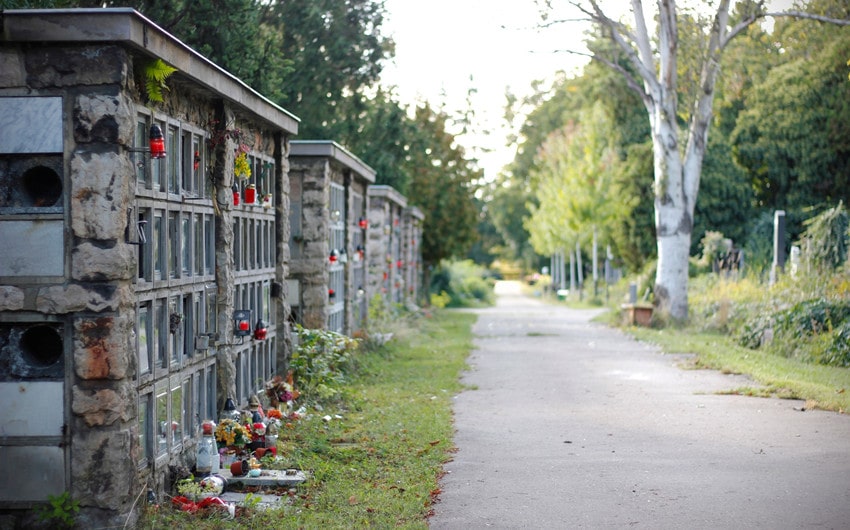Navigating the Committal Service: A Guide for Families
A committal service holds a special place in the journey of honoring a loved one. This intimate ceremony typically follows the main funeral service and provides an opportunity for family and friends to say their final goodbyes. During this time, emotions run deep, and the rituals observed can help bring comfort and closure.
Understanding the elements of a committal service allows us to better appreciate its significance in the grieving process and offers a meaningful way to celebrate a life well-lived.
Understanding Committal Services
A committal service is a significant ritual that occurs after the main funeral service, providing a dedicated moment for family and friends to gather and honor the deceased before their final resting place. This intimate ceremony often takes place at a graveside, crematorium, or another designated location, allowing attendees to participate in a meaningful farewell. The primary purpose of a committal service is to provide closure for those left behind, allowing them to express their grief and celebrate the life of their loved one in a supportive environment.
One of the key differences between a committal service and a traditional funeral service lies in its focus. While the funeral service typically includes eulogies, music, and readings to celebrate the life of the deceased, the committal service is more about the actual act of committing the body or ashes to the ground or another resting place.
This can involve rituals such as lowering the casket, scattering ashes, or placing flowers, which symbolize the love and memories shared. The simplicity and solemnity of the committal service provide a moment for reflection, allowing attendees to process their emotions and find solace in shared memories.

Elements of a Committal Service
A committal service typically includes several key elements that contribute to its solemn and reflective nature. These components help create an environment conducive to mourning while also celebrating the life of the deceased. Understanding these elements can provide clarity on what to expect during the service and how to personalize it.
1. Opening Words and Welcome: The service often begins with a brief welcome from the officiant or a family member. This opening sets the tone for the ceremony, acknowledging the presence of attendees and the purpose of gathering together. It may include comforting words or a brief reading that speaks to the themes of loss and remembrance.
2. Readings and Prayers: Many committal services incorporate meaningful readings or prayers that resonate with the beliefs and values of the deceased and their family. These may include excerpts from religious texts, poetry, or personal writings that reflect the individual’s life, character, or faith. Such readings can offer comfort and provide a moment of reflection for those present.
3. Committing the Body or Ashes: The central act of the committal service is the physical act of committing the body or ashes to their final resting place. This may involve lowering the casket into the ground, scattering ashes at a chosen location, or placing flowers on the grave. This moment is often marked by silence or soft music, allowing attendees to gather their thoughts and emotions.
4. Personal Tributes: Family and friends may choose to share personal tributes, anecdotes, or memories during the service. These tributes celebrate the life of the deceased, highlighting their impact on those around them. This sharing can be a poignant way to honor the individual and create a sense of connection among attendees.
5. Closing Remarks: As the service concludes, the officiant may offer closing remarks, expressing gratitude for those who attended and encouraging everyone to continue celebrating the life of the deceased in their hearts. This is often followed by an invitation to share additional memories or support one another in the days to come.
6. Rituals and Symbolic Acts: Many families choose to incorporate specific rituals or symbolic acts into the committal service, such as lighting candles, placing personal items in the grave, or releasing doves. These rituals add a personal touch, making the ceremony unique to the individual being honored and providing a tangible way to express grief and love.
When and Where Committal Services Take Place
Committal services are typically held shortly after the main funeral service, often on the same day or within a few days. The timing can vary based on several factors, including cultural traditions, the availability of the burial or cremation site, and the preferences of the family. Holding the committal service soon after the funeral allows mourners to maintain a sense of continuity in the grieving process and provides a focused opportunity for closure.
1. Timing of the Committal Service: The committal service often occurs after the funeral service at a designated location, which can include a cemetery, crematorium, or a family burial plot. In some cases, if the burial or cremation is delayed for logistical reasons, the committal service may take place at a later date. This flexibility allows families to plan the service in a way that accommodates their needs and those of their guests, ensuring that all who wish to attend can be present.
2. Locations for Committal Services:
- Cemeteries: The most common location for a committal service is a cemetery, where the deceased is interred in a grave. This setting allows for a traditional burial ceremony, complete with rituals like lowering the casket and placing flowers. Many cemeteries have designated areas for committal services, providing a peaceful environment for reflection.
- Crematoriums: For those who choose cremation, the committal service may take place at a crematorium. Some facilities offer private rooms or outdoor gardens where families can gather to say their goodbyes before the cremation process begins. This allows for a meaningful farewell in a serene setting.
- Natural Settings: Increasingly, families are opting for more personalized settings for committal services, such as parks, gardens, or even family-owned land. These locations can hold special significance and provide a more intimate atmosphere for commemorating the deceased.
- Columbariums: For cremated remains, a columbarium—an architectural structure containing niches for urns—can also serve as a location for committal services. Families may gather to place the urn in its niche and offer prayers or tributes, creating a sense of community and remembrance.
Personalizing the Committal Service
Personalizing a committal service is an important way to honor the unique life and legacy of the deceased. By incorporating elements that reflect their personality, beliefs, and the relationships they cherished, families can create a meaningful farewell that resonates with all who attend. Here are several ways to add personal touches to a committal service:
1. Customized Rituals: Incorporating specific rituals can make the service feel more intimate and reflective of the deceased’s life. For example, families might choose to include a moment of silence for personal reflection, or they may wish to release doves or balloons as a symbolic gesture of letting go. Some may opt to have attendees plant a tree or flowers at the gravesite, symbolizing the continuation of life and growth.
2. Meaningful Readings and Music: Choosing readings, poems, or songs that were significant to the deceased can add a deeply personal touch to the committal service. Families might select favorite verses from literature, religious texts, or even lyrics from beloved songs that encapsulate the essence of the person being honored. Music, whether played softly in the background or sung live, can evoke emotions and memories, creating a heartfelt atmosphere.
3. Personal Items and Tributes: Incorporating personal items that belonged to the deceased can serve as a powerful tribute. Families might choose to display photographs, memorabilia, or favorite belongings at the committal site. These items can spark memories and stories, allowing attendees to share their connections to the deceased and celebrate their life together.
4. Inviting Participation: Encouraging attendees to share their thoughts, memories, or anecdotes during the service can create a communal atmosphere of remembrance. Families might provide an opportunity for friends and family members to speak or write messages that can be placed in the casket or read aloud. This inclusivity fosters a sense of togetherness and allows everyone to contribute to the tribute.
5. Thematic Decorations: Decorating the committal site with flowers, symbols, or colors that reflect the deceased’s personality or passions can enhance the environment. For instance, if the individual was passionate about gardening, floral arrangements featuring their favorite blooms can create a serene backdrop. Themes that reflect hobbies, interests, or cultural backgrounds can also add layers of meaning to the service.
Supporting Grieving Family and Friends during a Committal Service
Supporting grieving family and friends during a committal service is vital, as this is often a particularly emotional time for those in attendance. Providing comfort and companionship can make a significant difference in their experience of loss. Here are some ways to offer support during this sensitive occasion:
1. Being Present: Simply showing up is one of the most important ways to support grieving loved ones. Your presence conveys solidarity and care, letting them know they are not alone in their grief. Being there allows them to feel the love and support of their community, which can be incredibly comforting during such a difficult time.
2. Active Listening: During the committal service, take the time to listen actively to those who wish to share their feelings or memories. Grieving individuals often appreciate the opportunity to express their emotions, whether through tears, laughter, or storytelling. By offering a listening ear, you create a safe space for them to process their feelings, which can be therapeutic in their journey through grief.
3. Offering Practical Help: Grief can be overwhelming, and those who are mourning may struggle to manage day-to-day tasks. Offering practical help, such as preparing meals, assisting with arrangements, or helping to coordinate the service, can alleviate some of the burdens they face. Even small gestures, like running errands or helping with childcare, can provide significant relief.
4. Sharing Memories: Encouraging attendees to share fond memories or anecdotes about the deceased can create a sense of connection and community. This shared reminiscing can foster healing, allowing everyone to celebrate the life of the person they loved. When you share your own memories, it shows support and helps to keep the memory of the deceased alive in the hearts of those present.
5. Checking In After the Service: Support shouldn’t end with the committal service. Continue to check in on grieving friends and family in the days and weeks following the event. A simple phone call, text message, or visit can remind them that they are not alone and that their feelings matter. Offering to meet for coffee or a walk can provide them with an outlet to express their ongoing grief.
6. Encouraging Professional Support: Sometimes, the best way to support someone in grief is to encourage them to seek professional help if needed. Grief counselors, therapists, or support groups can provide specialized guidance that friends and family may not be equipped to offer. Let them know that seeking help is a sign of strength and that it’s okay to need additional support during this challenging time.







